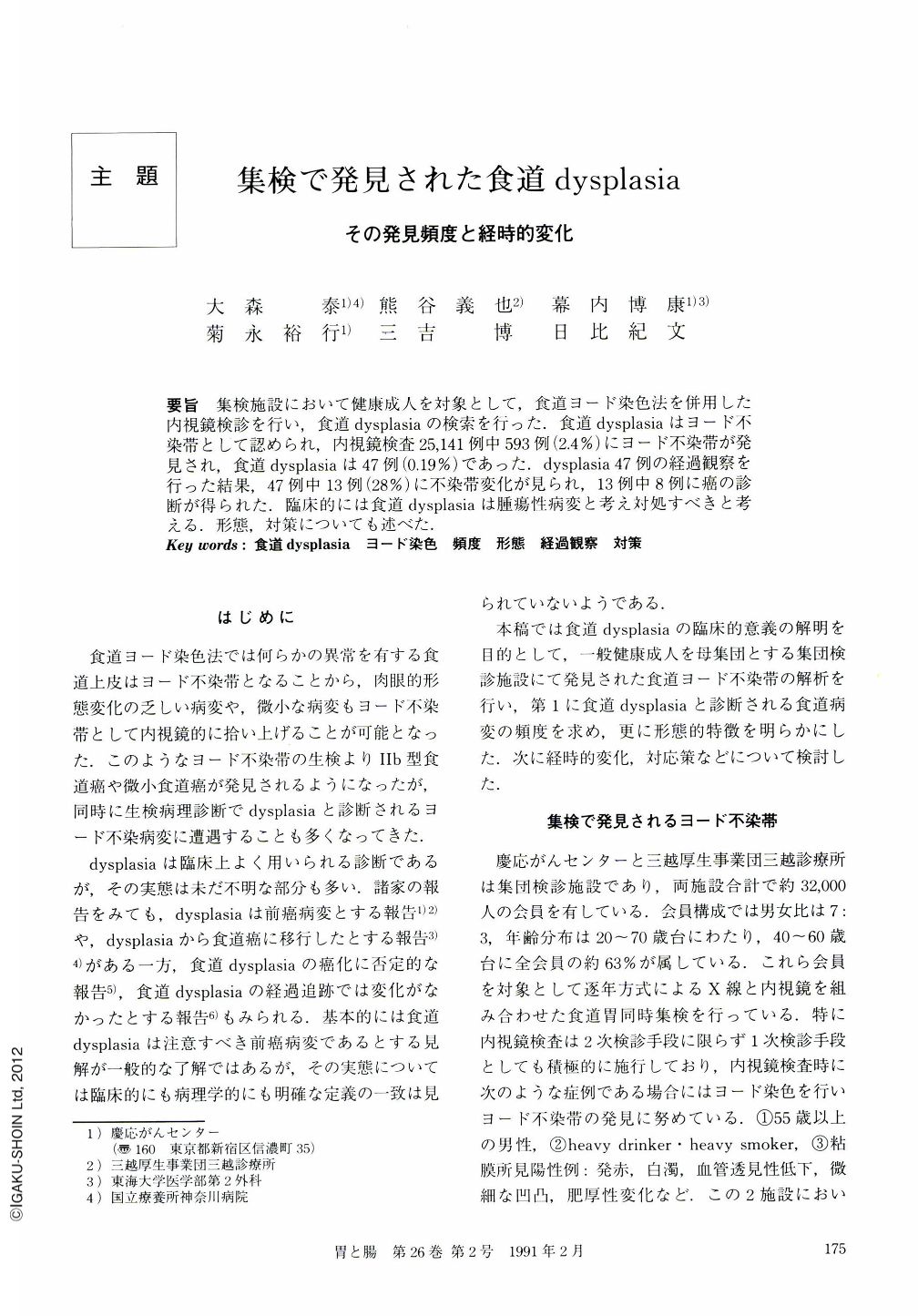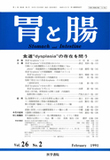Japanese
English
- 有料閲覧
- Abstract 文献概要
- 1ページ目 Look Inside
要旨 集検施設において健康成人を対象として,食道ヨード染色法を併用した内視鏡検診を行い,食道dysplasiaの検索を行った.食道dysplasiaはヨード不染帯として認められ,内視鏡検査25,141例中593例(2.4%)にヨード不染帯が発見され,食道dysplasiaは47例(0.19%)であった.dysplasia 47例の経過観察を行った結果,47例中13例(28%)に不染帯変化が見られ,13例中8例に癌の診断が得られた.臨床的には食道dysplasiaは腫瘍性病変と考え対処すべきと考える.形態,対策についても述べた.
A total of 593 cases of iodine unstained areas in the esophagus were detected by esophagoscopic examination in mass screening programs over the past 6 years at Keio Cancer Detection Center and Mitsukoshi Clinic. Diagnosis of dysplasia was made in 47 among these 593 cases. The frequency of areas unstained by iodine was 1.6-3.6%, and that of dysplasias 0.1-0.3% in our two institutions. There are 3 characteristics noted for dysplasia. (1) Most dysplasia is detected only by iodine staining, and it is almost impossible to distinguish between dysplasia and normal epithelium by esophagoscopy without iodine method. (2) Dysplasia presents itself as areas unstained by iodine, clearly demarcated and white in color. (3) Most dysplasia is larger than 5 mm in diameter. Extensive follow-up of these 47 dysplasia cases showed that diameter increased in 13 cases doring the period of observation.Five of these 13 cases developed intraepithelial cancer. In another 3 of 13 cases in which dysplasia was severe on the first biopsy followed by carcinoma on the next biopsy. Cancer was resected in all these 8 cases either by thoracotomyor esophagofiberscope. Pathologically they were all early cancers. Esophageal dysplasia is therefore considered to be precancerous state, and we should make efforts to detect it to improve the prognosis of esophageal cancer.

Copyright © 1991, Igaku-Shoin Ltd. All rights reserved.


